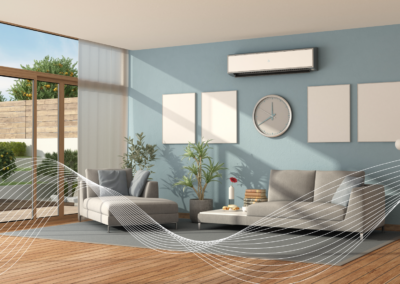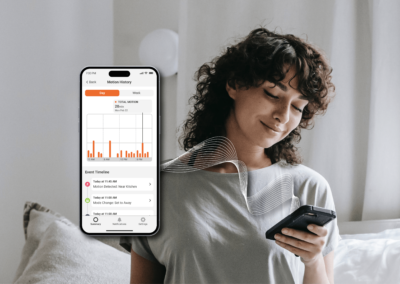Resources

Expanding Quality of Care with Ambient Sensing: Recap from the 2025 MAMA National Conference
At this year’s MAMA National Conference (recently rebranded to Connected Health & Safety Association) in Philadelphia, our CEO, Dr. Taj Manku, took the stage to share how ambient sensing powered by WiFi Motion is opening new possibilities for the Personal...
Expanding Quality of Care with Ambient Sensing: Recap from the 2025 MAMA National Conference
At the 2025 MAMA National Conference (now the Connected Health & Safety Association), Dr. Taj Manku, CEO of Cognitive Systems, shared how ambient sensing powered by Caregiver bt Cognitive is transforming eldercare. His talk explored how providers can move beyond emergency response to proactive wellness monitoring—unlocking earlier interventions, peace of mind for families, and new opportunities for the PERS industry.
Filter by topic

Bridging the Tech Divide: Why Partnerships and Open-Source Are Key to Smarter Homes
With tech advancements on the rise, no single innovation can address every challenge. The real power lies in collaboration. This blog explores how partnerships and open-source frameworks like those by prpl Foundation and the IEEE 802.11bf standard foster interoperability in Wi-Fi Sensing, making it a vital player in the smart home ecosystem. By enabling data fusion and connecting diverse technologies, Wi-Fi Sensing offers enhanced security, home automation, and healthcare monitoring.

The Benefits of Wi-Fi Sensing for Whole Home Awareness
Home security today is moving beyond simply securing entry points and perimeters. With Wi-Fi Sensing, you gain whole home awareness—continuous insight into movement and activity across your entire home. This blog explores how Wi-Fi Motion technology can integrate with existing security systems, offering privacy-respecting, cost-effective, and comprehensive coverage that reduces false alarms and scales seamlessly with your needs. Learn how Wi-Fi Sensing can enhance traditional home security and bring peace of mind through proactive monitoring across every corner of your home.

Meet the Cognitive Team: Dr. Taj Manku, CEO & Co-Founder | Part 2
In Part 2 of his video interview series, get to know Dr. Taj Manku, CEO and Co-Founder of Cognitive Systems, as he shares his thoughts on mentorship, problem-solving, and innovation. Dr. Manku discusses the importance of helping people see both the bigger picture and the intricate details, the challenges of scaling an idea from one to a million, and the discipline required to prioritize solutions for customers.

The Opportunity of Too Much Data
As the smart home industry grows, managing fragmented data from various devices has become a major challenge. The future of smart homes lies in turning this data into actionable insights, using AI and Wi-Fi Sensing technology to create intuitive, adaptive environments. Cognitive Systems is at the forefront of this transformation, leveraging WiFi Motion™ technology to improve security, energy efficiency, and health monitoring—all while simplifying the smart home experience.

CareAware Wins Best Wi-Fi for Social Impact Award – 2024 WBA Industry Awards
Cognitive is thrilled to announce that CareAware, our innovative Wi-Fi Sensing solution developed in partnership with Electronic Caregiver, has won Best Wi-Fi for Social Impact Award at the 2024 Wireless Broadband Alliance (WBA) Industry Awards. CareAware uses wireless signals to monitor movement and presence within the home, allowing caregivers to track seniors' activity, sleep patterns, and overall well-being in real-time, all without the need for wearable devices.

Meet the Cognitive Team: Dr. Taj Manku, CEO & Co-Founder | Part 1
In this video, Dr. Taj Manku, the CEO and Co-Founder of Cognitive Systems, shares his extensive experience in the wireless industry and discusses the innovative technology behind Cognitive's solutions. With over 20 years of expertise in interpreting wireless signals, Dr. Manku explains how this technology can enhance our understanding of everyday activities in our homes. He highlights the application of WiFi Motion technology, particularly in monitoring the well-being of loved ones, such as elderly family members.

The Three Pillars of WiFi Motion Insights
This blog explores how WiFi Motion™ leverages advanced algorithms and machine learning to provide real-time, historical, and event-based motion detection insights through Wi-Fi Sensing. It highlights how each motion type—live for immediate action, historical for trend analysis, and event-based for critical alerts—contributes to a comprehensive understanding of movement in various environments. By integrating these data types, Wi-Fi Sensing systems offer users enhanced security, energy efficiency, and peace of mind, while enabling developers to create more responsive, customizable applications that reduce false alarms and improve overall user experience.

Optimizing Wi-Fi Sensing UI for Better User Experience
This blog explores key factors for successfully adopting Wi-Fi Sensing technology, based on Cognitive Systems' experience with solutions like HomeCare and Caregiver Aware. It emphasizes the importance of a smooth setup, efficient motion monitoring, clear data visualization, and user-friendly design. By focusing on ease of use and customer satisfaction, Cognitive Systems shows how thoughtful design ensures Wi-Fi Sensing’s real-world success.

How Will Wi-Fi Sensing Reach Mass Adoption?
Part 3 of our 802.11bf series highlights the importance of interoperability and industry adoption for Wi-Fi Sensing's success. Seamless communication between devices from different manufacturers is key to creating a unified ecosystem and driving growth. As vendors gradually implement 802.11bf features, sensing capabilities and Wi-Fi reliability will improve. The blog also stresses the need for strategic partnerships, education, and innovation to overcome challenges and unlock the full potential of this transformative technology.
